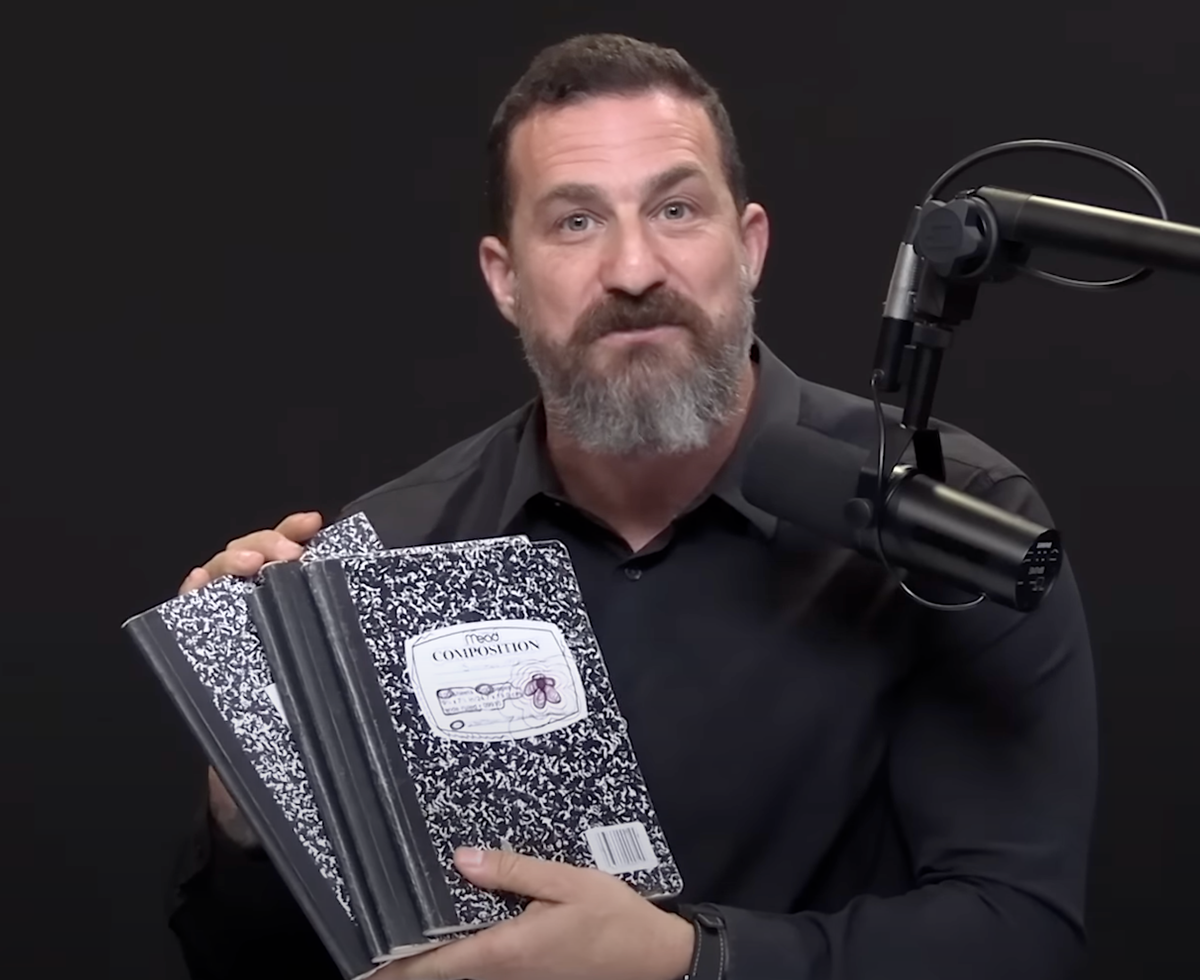Expressive Writing Protocol: The Science-Backed Journaling Method Huberman Recommends
A powerful journaling protocol backed by over 200 studies shows that writing for just 15–30 minutes a day, four times, can measurably improve your mental and physical health.

Journaling is often painted as a feel-good habit. But Andrew Huberman, on the Huberman Lab Podcast, highlights a specific journaling method backed by 200+ peer-reviewed studies—one that influences mental health, immunity, inflammation, and much more.
This is not “Dear Diary” or morning pages or gratitude lists (though those have value). This is expressive writing, following the protocol pioneered by Dr. James Pennebaker. Huberman calls it one of the foundational health tools you didn’t know you needed.
Let’s unpack it: how it works, why it works, and how you can do it.
Origins & Core Idea: Pennebaker & the Discovery of Expressive Writing
- In the mid-1980s, Pennebaker began experiments where participants would write for 15–30 minutes about their most difficult, emotionally charged experiences.
- Crucially: they had to write continuously (don’t pause, don’t self-edit) and they were told not to care about grammar, spelling, or readability.
- Multiple follow-up studies refined and extended the protocol across populations (students, veterans, clinical groups).
Huberman emphasizes that although the idea of “writing about your feelings” is common, the specific structure of this expressive writing method is what gives it its edge.
Protocol (How to Do It)
Here’s the distilled version of what Huberman lays out (drawn from the research). Use it as your map.
| Step | What to Do | Notes / Why |
|---|---|---|
| Choose the Topic | Pick the most distressing or difficult experience you can recall. It doesn’t have to be “trauma” in the clinical sense. | If you have multiple possible events, rank them and pick one you can emotionally handle. Start with something moderately stressful rather than overwhelming. |
| Four Writing Sessions | Write four times about the same experience. Each session: 15–30 minutes. | Sessions can be on consecutive days or spaced out (e.g. once per week) — both formats show benefit. |
| Continuous Writing | Don’t pause, edit, or censor yourself. Keep the pen (or fingers) moving the whole time. | Even if you feel blocked, keep going. Emotions and details often surface later in the session. |
| Include Three Key Elements | a) Facts: what happened, who was there. b) Emotions: what you felt then and what you feel now. c) Connections: links to your past, present, future, or to other people and themes. | These dimensions deepen processing, help you contextualize the experience, and allow your brain to re-map the memory. |
| Post-Writing Recovery | After each session, give yourself 5–15 minutes of calm to rest, breathe, and reset. | The process can be emotionally intense. A transition period helps your nervous system settle. |
| Optional Analysis Later | After completing all sessions, you may revisit your writing to observe patterns — shifts in tone, emotional intensity, or coherence. | Many people notice that negative words decrease and narratives become more organized across sessions, reflecting cognitive and emotional integration. |
Huberman also notes: you are writing for yourself. You're not crafting a masterpiece. Don’t worry about style, grammar, or readability. This is private, raw work.
Why This Protocol Works (Mechanisms + Evidence)
Huberman and the literature point to several overlapping mechanisms. Here are the strongest:
- Neuroplastic Activation of Prefrontal Cortex
- Stress and trauma often reduce the activity or control of the prefrontal cortex (PFC).
- By forcing you to recount, structure, re-narrativize your experience (truth-telling + emotional linking), you re-engage and strengthen PFC circuits, which in turn better regulate limbic / subcortical systems (amygdala, autonomic responses).
- Huberman frames the “emotional resonance + truth” as the stimulus for that neuroplastic growth.
- Language, Expression & Introspection
- The use of emotion words, change in word usage over time is predictive of healing. The more you can “name” and “connect,” the more your internal mapping clarifies.
- As participants repeat sessions, they tend to shift from raw expression to more coherent narrative form. The act of structuring deepens comprehension and emotional integration.
- Immune & Physiological Impact
- Some of the most striking findings: writing about emotional experiences correlates with improved immune response (T-cell activation under challenge), lower markers of stress, better sleep, reductions in autoimmune symptom severity.
- That is, the brain-body link is real in these experiments, beyond mere psychological relief.
- Emotional Catharsis + Integration
- Reliving the event in detail, but in a safe, structured way, can help dislodge stuck emotional patterns.
- The repeated revisit allows for reappraisal, meaning-making, and new insights over time.
It’s worth noting: while the protocol shows robust effects, it’s not a cure for clinical PTSD, depression, or extreme psychiatric conditions. But it’s a potent adjunct therapy.
How This Differs from “Normal Journaling” (And Why That Matters)
| Type | Focus | Emotional Depth | Structure | Benefit Scope |
|---|---|---|---|---|
| Expressive / Pennebaker Protocol | One deep event, repeated | High | Formalized, repeated | Effects on mental & physical health |
| Diary / Daily Logging | What happened / thoughts | Low to moderate | Freeform | Habit, self-awareness |
| Morning Pages / Stream-of-Consciousness | Brain dump | Moderate | Loose | Clarity, flow |
| Gratitude Journaling | What’s good | Positive | Prompted | Mood uplift, resilience |
Huberman emphasizes that conventional journaling styles (diary, gratitude, morning pages) have their place, but they do different jobs. The expressive writing protocol is aimed at deep processing and healing, not just organization or positivity.
Warnings, Tips & Best Practices (What Huberman Cautions About)
- The writing can be emotionally intense. You may cry, feel drained, anxious. That is part of the process.
- Don’t do this just before sleep or when you can’t afford emotional fallout. Schedule in recovery time.
- Don’t share what you write unless with a trusted mental health professional. Some writing can trigger distress in listeners (secondary trauma).
- If the emotional cost feels too big, start with a less intense event first, or pause the protocol.
- It’s low or zero financial cost, but not zero emotional cost — treat it with respect.


